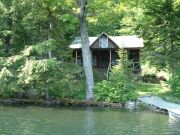The Vermont DEC has released the final version of a report on funding needs for clean water in Vermont. The legislature requested the report in Act 138 of the 2012 session. DEC estimates it will cost $156 million per year in order to achieve the state’s clean water goals.
The report is organized into three chapters. The first describes the municipal and state wide challenges in 19 categories of need with cost estimates for each. Categories of need include various aspects of stormwater management, river protection, agricultural pollution programs, and sewage treatment plant maintenance. The second chapter analyzes 16 possible financial tools for generating additional revenue. The funding options are evaluated based on criteria such as the amount of revenue raised, public acceptability of the option, equity, and administrative complexity. Unfortunately, even if all the funding options considered were implemented they would not generate $156 million per year. The third chapter considers eight options for administering a statewide water quality trust fund.
In a separate report, also requested in Act 138, DEC outlined some options for better managing lakeshores (full report here; executive summary here). This report notes that the pace and scale of shoreline clearing is increased and negative effects on water quality have been observed as a result. In Vermont, 82% of lakeshores are in ‘fair’ or ‘poor’ condition, worse than in other parts of the Northeast or even the nation. DEC Commissioner David Mears said he is “hopeful” that the legislature will work to strengthen lakeshore management and that “at a minimum we need to do more than we are doing now."
The final report incorporates a number of important changes requested by LCC particularly with regard to the responsibility of farms to comply with Accepted Agricultural Practices.
